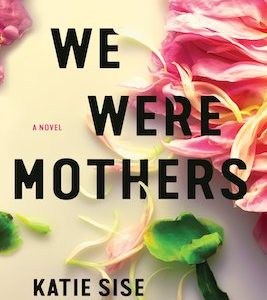I’ve never been to a grand English estate. Not if we’re talking about real life. I have, of course, been to them many times before through stories and TV sets, transported by characters and crime. Some of my favorite memories growing up involve sinking into our living room couch and watching Masterpiece Mystery with my father as we challenged each other to see who could figure out “whodunit” first (I’m writing this, so I get to say it: it was me).
I’ve taken in the lush gardens, the grand décor, the darky, spooky corridors and secret passageways; the atmospheres, thick with cobwebs, real and symbolic. Even though I’ve never actually been to one, the setting is one that’s so familiar, I can taste it. In that way, it’s familiar and foreign at the same time. It’s foreign because, well—there aren’t many English country estates on Chicago’s south side. But the familiarity is there. It’s in the setting’s promise, thick and warm, as it wraps itself around me like a well-worn coat until the final denouncement. The rolling hills, the well-placed cliff, the perceptive, brooding butler all set the stage and say, this is familiar territory. The familiarity here is in the experience.
Familiarity and foreignness are two concepts that waltz alongside each other in crime fiction. The act of murder itself is so foreign, so arcane, little else in a story need be; and yet, we’ve become accustomed to watching crime from the outside in, in settings much unlike the ones we inhabit. Foreignness in setting allows us to take a step back and connect to characters that may not look, talk or live like we do. We find familiarity in the characters themselves; in their motivations, their greed, their jealousy, their unspoken desires. Foreignness in crime fiction forces us to search for sameness so we can connect and understand.
Familiarity in crime fiction does the opposite. The prevalence of books deliberately and distinctly focused on simple, everyday imagery—think windows, trains and ride shares—creates a backdrop that connects us, on the most basic level, to fictional worlds. This familiarity is not about experience; it’s about identification.
The prevalence of books deliberately and distinctly focused on simple, everyday imagery—think windows, trains and ride shares—creates a backdrop that connects us, on the most basic level, to fictional worlds.In The Woman in the Window, for example, A.J. Finn delivers a protagonist who watches her neighbors through her window with the help of her camera’s viewfinder. The window in this book is a setting of its own. How many times have you stood in front of a well-lit window and wondered how many eyes were on you? Likewise, how many times have you driven past a house with its shades drawn and let your eyes linger on the décor in the room because nobody is watching? The story tugs at our voyeuristic desires to know how other people live, to compare ourselves, to find a measure for whether or not we’re “doing it right.” It’s familiar.
Then, of course, there’s the long-standing combination of murder and locomotives. Of course, crime fiction set on train rides is not a new concept; the steady sway of the train creates a seductive background for murder. But modern stories featuring trains hold a different appeal than the opulent sleeping cars and arranged dinner times of stories past. This appeal is more “crushed passengers, body odor and schedule delays.” We can breathe it, smell it and feel it because we live it every day. It’s familiar.
In my latest novel, The Night in Question, I explore crime with the backdrop of another very common mode of transportation—ride shares. What wouldn’t have made sense a decade ago is now a setting that resonates with millions of riders across the globe. And “setting” in this case goes far beyond the inside of an adequately-maintained car—it’s the interaction between drivers and passengers; the idle chit chat; the hunched figure of a rider standing in the middle of the street and peering down at a license plate. For riders around the world, this setting is real-life. It’s—you guessed it—familiar.
These simple images provide settings that resonate with diverse audiences through their ‘ordinary-ness.’ They’re the settings that make our lives whole—places where we interact with other people, and where we can see ourselves, our families, our friends. They are not familiar because we understand them; they’re familiar because we live them, day in and day out.
When we can see ourselves too clearly in a flawed protagonist, or when a setting hits too close to home, we look for what’s different.If we look for sameness in foreign settings, we look for differences in familiar ones. We have to. When we can see ourselves too clearly in a flawed protagonist, or when a setting hits too close to home, we look for what’s different. For why we’re different. We must satisfy our inherent need to understand that we are better, safer, stronger, wiser or luckier. Put simply, when we see ourselves in characters that do bad things, or who have bad things happen to them, we search for a sign that we’d be spared the same fate.
Stories about crime and murder are much less about the crime themselves than they are about the people behind them. They’re about how crime disrupts what we know, and that’s often what scares us the most. It’s the tension between familiarity and foreignness in these stories that a us allows us to invest and connect at a safe distance. We’re able to watch as crime upsets the ordinary and, in most cases, we get to watch it all get put back together again.
Because that’s the key, isn’t it? We need to know that at the end of the day, if the dark and terrifying story on the page ever got too familiar—if it ever got so close to our real lives that it actually overlapped—maybe we’d find a way to put it all back together, too.

















